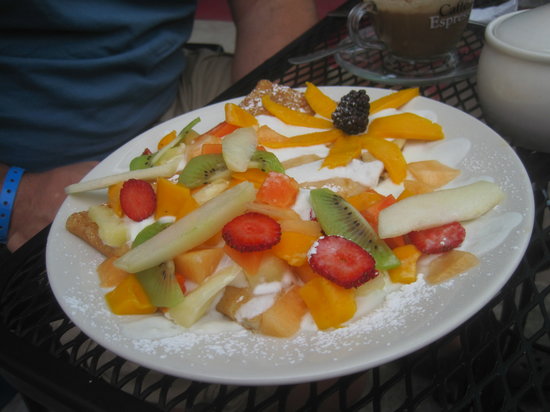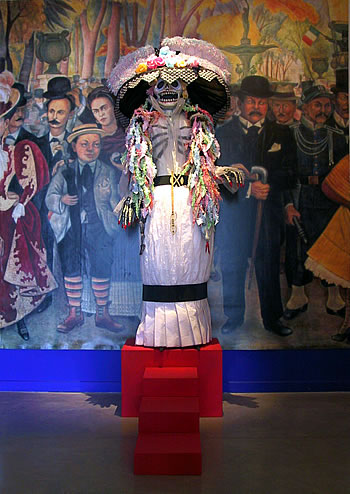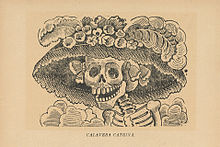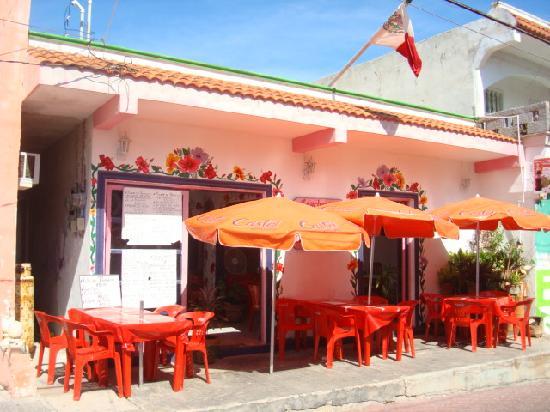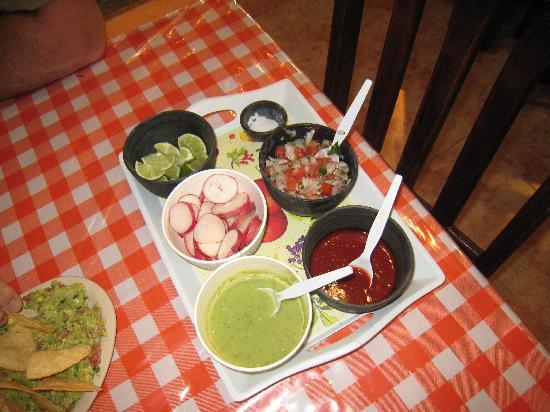This is a typical fruit plate In Isla Mujeres. It is from Alexia & Geovanny's in front of the Mexican Mercado. These four loncherias are my favorite place to order fruit plates because they are always fresh and affordable. (~$4) After taking your order, someone may dash into the market to purchase your fresh, ripe fruit.
The fruits are usually cantaloupe, watermelon, banana, mango, papaya, pineapple and lime. Sometimes strawberries or kiwi. Yogurt, granola, and honey are usually offered. The plates above are from Tacos Tumbra. I don't recall if the blue tablecloth is from San Martin's or Poc Chuc Loncheria, which are side by side, in front of the Mexican Mercado.
The exotic fruit plate above is from Villa Rolandi's, Isla Mujeres fanciest restaurant. The fruit plate at right is also from this hotel, located in Sac Bajo.
 |
| Cafe Mogagua at the corner of Juarez & Madero (above). |
Cafe Hidalgo has an excellent fruit bowl, but I don't have a picture of it. The fruit are cut in small pieces and usually include apples, berries, and kiwis, in addition to the usual tropical fruits. Below are two pictures of their fruit crepes. They cut it to order, so you will have time to relax and enjoy the excellent hot chocolate or European style coffee and people watch while your food is being prepared.
This is from Elements of the Island, on Juarez, at the north end.
 |
| This is from Cazuela M&J on the back street. |

This is the Supermarket San Francisco on the town square. The local women know which days are the best days to shop there for produce.
 |
| A store at the Mexican Mercado. |
 |
| Photo from Mexican Mercado downtown |
 There are unusual dried fruits for sale. The ones I recognize include mango, papaya, peach, kiwi, apples, apricot, pineapple, dates, figs, and several more I really like, but can't identify. I got these at the Super market on the town square.
There are unusual dried fruits for sale. The ones I recognize include mango, papaya, peach, kiwi, apples, apricot, pineapple, dates, figs, and several more I really like, but can't identify. I got these at the Super market on the town square. |
| Fresh orange juice costs about two dollars a liter. You can also buy a half liter bottle, and or in a knotted bag, with a straw. Grapefruit juice costs about three dollars per liter and is not always available. Prices and sweetness can vary week to week. He also sells peeled oranges. He lives in mid island and pedals his trike full of oranges into el Centro daily. He is usually by main on a side street in the morning and in front of UltraMar ferry in the afternoons.He has chilled juice bottles on ice that are freshly squeezed. There are juice vendors in the Mercado and in the colonias, usually until 2-3 in the afternoon. At MaraVilla Caribe a vendor stops by daily, who also sells vegetable juices and mixtures. |
 A great way to enjoy tropical fruits is in licuados, or smoothies. To the right is a Mango licuado from Amigo's on Hidalgo. Mamay milk shakes are a favorite of mine, with their mildly nutty flavor. If you have a chance, try agua de sandia, which is watermelon juice. It is very refreshing, but does not keep. Qubano's may have it available, who serve lunch and are closed on weekends. Sometimes the juice sellers at the market offer it.
A great way to enjoy tropical fruits is in licuados, or smoothies. To the right is a Mango licuado from Amigo's on Hidalgo. Mamay milk shakes are a favorite of mine, with their mildly nutty flavor. If you have a chance, try agua de sandia, which is watermelon juice. It is very refreshing, but does not keep. Qubano's may have it available, who serve lunch and are closed on weekends. Sometimes the juice sellers at the market offer it.  |
| This is agua de Pitahaya or Pitahaya "ade". It is not usually available but is easy to make with a blender. At MaraVilla Caribe there are Magic Bullet blenders that work great for making fresh fruit drinks. There are two produce vendors a couple blocks away and a juice store. Fruits are usually ripe when sold, and people often shop several times a week. |



